ECB kept main refi rate at 0%, deposit rate at -0.5%, PEPP envelop at EUR1350B
ECB left monetary policy unchanged as widely expected. Main refinancing rate is held at 0.00%, deposit rate at -0.50%, and marginal lending facility rate at 0.25%. ECB also reiterated the expectation that “key ECB interest rates to remain at their present or lower levels.
Also, the envelope of EUR 1350B of the pandemic emergency purchase programme is kept unchanged. The PEPP asset purchases will continue “until at least the end of June 2021”. Net purchase under the asset purchase programme will continue at EUR 20B monthly pace. , together with purchase under the additional EUR 120B temporary envelope until the end of the year.
DIW expects -6% contraction in German GDP this year, more optimistic overall than in summer
Germany’s economic institute projected a much less severe GDP contraction of -6% this year, revised from June’s estimate of -9.4%. For 2021 and 2022, grow is expected come back with 4.1% and 3.0% rise respectively. But the forecasts are based on assumption that there will not be renewed lockdown as another wave of coronavirus infections.
Marcel Fratzscher, DIW President: “The economic slump this year is likely to be a little less than feared. It would be wrong to think now that the crisis will be over quickly. We have to admit that there can and will be setbacks, for example corporate bankruptcies and an increase in unemployment. It is therefore right that the federal government has extended many aid measures.”
Claus Michelsen, DIW Economic Director: “So far, the German economy has come through the crisis better than feared. The historic slump in gross domestic product in the spring will be followed by an extremely strong third quarter, so we can be more optimistic overall than we were in the summer. Politicians reacted correctly to the crisis with their stabilizing measures – the federal government’s economic stimulus program is also helping to get demand going again. Nevertheless, the bottom line is that economic output this year is likely to decline significantly compared to the previous year.
“And for the further process, at least skepticism is appropriate. Many important German trading partners have been hit even harder, which means that the export industry in this country can look to an uncertain future. And in Germany, too, much of the economic damage will only gradually become apparent. So the crisis will keep us busy for a long time. ”
Euro resilient as ECB comments on its strength awaited
ECB meeting is a major focus today and no policy change is expected. ECB should maintain the deposit rate at -0.5%. The main refi rate and the marginal lending rate will also stay unchanged at 0% and 0.25% respectively. The PEPP program will continue to run with a total envelope of 1.35 trillion euro. We expect the central bank will reiterate the guidance that the purchases “will” continue “until at least the end of June 2021 and, in any case, until the Governing Council judges that the coronavirus crisis phase is over”.
Attention will main be on ECB’s view on recent Euro strength, against Dollar mainly. Chief Economist Philip Lane’s speech at Jackson Hole. Lane raised concerns that rising EURUSD could prolong weak inflation and inflation expectations. As he suggested, “we have an inflation mandate and we care about the overall performance of the European economy”. He added that there has been “a repricing in recent weeks” in EURUSD “to some degree”.
EUR/USD has been resiliently holing on to 1.1762 near term structure support recently. But traders might only be waiting for ECB Governor Christine Lagarde’s nod on selling it through the support to correct the strong rally since March.
Some suggested readings on ECB:
GBP/CHF targeting 1.1630, awaits extraordinary Brexit meeting
Sterling remains the worst performer for the week on concerns over Brexit uncertainties. It’s reported that EU is considering legal against the UK According to a draft working paper by the EU, UK’s Internal Market Bill is seen as a “clear breach of substantive provisions” of the Brexit withdrawal agreement
European Commission Vice-President Maroš Šefčovič will travel to London today to meet UK Chancellor of the Duchy of Lancaster Michael Gove for an ” extraordinary meeting of the Joint Committee” that oversees Brexit implementation. The EU said it “seeks clarifications from the UK on the full and timely implementation of the Withdrawal Agreement” EU’s chief negotiator Michel barnier, arrived in London yesterday, is expected to confront the UK counterpart David Frost over the issue too.
GBP/CHF’s decline from 1.222 extends to as low as 1.1831 so far. Such decline is currently seen as the third leg of the consolidation pattern from 1.2259. Deeper fall could be seen to 1.1630 and probably below. But strong support is expected at 61.8% retracement of 1.1102 to 1.2259 at 1.1544 to contain downside and bring rebound.
However, note that GBP/CHF was just rejected by 55 week EMA. Sustained break of 1.1544 would in turn argue that larger down trend is indeed resume for a new low below 1.1102.
BoC stand pat, maintain pledge to keep rate at ELB and continue with QE
BoC left monetary policy unchanged as widely expected. Overnight rate is kept at effective lower bound of 0.25%. Bank rate and deposit rate correspond at 0.50% and 0.25% respectively. The QE program will continue at at least CAD 5B per week.
In the accompany statement, BoC said the global and Canadian economies are “evolving broadly in line” with July MPR. The strong reopening phase will be followed by a “protracted and uneven recuperation phase, which will be heavily reliant on policy support”.
The central bank maintain the pledge to keep policy rate at ELB ” until economic slack is absorbed so that the 2 percent inflation target is sustainably achieved.”. The QE program will continue ” until the recovery is well underway and will be calibrated to provide the monetary policy stimulus needed to support the recovery and achieve the inflation objective.”
UK Johnson’s internal market bill draws criticism from EU, Scotland and Wales
Sterling’s selloff continues today after UK Prime Minister Boris Johnson’s government published the so called internal market bill, which negates some key aspects of the Brexit withdrawal agreement. European Commission President Ursula von der Leyen wrote in quick response. “Very concerned about announcements from the British government on its intentions to breach the withdrawal Agreement,” she said. “This would break international law and undermines trust. Pacta sunt servanda = the foundation of prosperous future relations.”
Scottish First Minister Nicola Sturgeon also criticized, “the internal market bill that the UK government will publish today is a full frontal assault on devolution…. , this is a bill that, by the government’s own admission, breaks international law. This UK gov is the most reckless (& to make it worse, incompetently so) and unprincipled in my lifetime.
The Welsh counsel general and minister for European transition, Jeremy Miles, also said bluntly. “Let me be clear – the UK government plans to sacrifice the future of the union by stealing powers from devolved administrations,” he said. “This bill is an attack on democracy.”
CAD/JPY pressing 55 day EMA support as BoC awaited
BoC meeting is a major focus today and it will undoubtedly keep monetary unchanged. The overnight rate target will be held at effective lower bound of 0.25%. Large-scale asset purchase will continue at CAD 5B per week pace. Governor Tiff Macklem should reiterate the pledge to ” hold the policy interest rate at the effective lower bound until economic slack is absorbed so that the 2 percent inflation target is sustainably achieved.”
GDP data for May (4.8% mom) and June (6.5) suggest that slightly stronger than expected recovery is underway. Yet, the path ahead remains largely uncertain, depending on the coronavirus, vaccines and treatments. Hence, while Macklem might acknowledge the pleasant surprises of the economic data, the overall tone would remain cautious. Topics like yield curve control and Fed’s style average inflation targeting might be discussed. But there is no pressing need for any change as of now.
Canadian Dollar is currently the second worst performing one next to Sterling, as dragged down by the steep fall in oil prices. CAD/JPY is now pressing key near term support at 79.88, as well as 55 day EMA. Sustained break there will confirm the completion of rise from 77.61 to 81.58. We should at least see a deeper decline back to 81.58 support for the near term in that case.
Australia Westpac consumer sentiment rose 18%, returning to more normal levels
Australia Westpac Consumer Sentiment surged 18% to 94.8 in September, up from 79.5. The index is now just -1.6% below the average over the six months prior to the emergence of COVID-19 in March. “Consumer confidence is returning to more normal levels, although the sensitivity to progress in managing the virus and the opening up of economies remains key to the outlook”
RBA will next meet on October 6, the same say as the government’s Federal Budget announcement. Westpac said “it is reasonable to expect further initiatives from the Reserve Bank to loosen monetary policy”. That approach will be “entirely appropriate” to complement the stimulatory budget.
New Zealand ANZ business confidence jumped to -26, firms looking through coronavirus re-emergence
Preliminary reading of ANZ Business Outlook survey showed marked improvement in business confidence , from -41.8 to -26.0. Own activity outlook also jumped form -17.5 to -9.9. ANZ said “firms are largely looking through the re-emergence of COVID-19 in the community”. Many activity indicators are also “at their highest levels since February”, even though still well down compared to pre-COVID days”.
ANZ added: “The New Zealand economy has a long way to go to navigate this crisis. Fiscal and monetary policy are certainly working their magic. But come year end, far fewer firms will be supported by wage subsidies, and the loss of tourists will be more sorely felt. But for now, things appear to be firmly in the “could be worse” basket.”
Also released, manufacturing sales dropped -12.2% in Q2. The main industry movements were: petroleum and coal products; down -33%, metal products, down -22%; transport equipment, machinery, and equipment, down -14%.
Stocks tumbled as AstraZeneca pauses vaccine trial, NASDAQ holding on to 10789 support
Now, there’s finally a strong reason that could explain the deep selloff in the stock market that started late last week. AstraZeneca Plc said it has paused a late-stage trial of one of the coronavirus vaccine candidate, due to an “unexplained illness in one of the trials. The company said that’s “routine action” while the illness is investigated, “ensuring we maintain the integrity of the trials”. Also, “in large trials, illnesses will happen by chance but must be independently reviewed to check this carefully.”
All major US indices ended sharply lower, with DOW down -2.25%, S&P 500 down -2.8%, NASDAQ down -4.11%. NASDAQ is still holding on to key near term fibonacci level for now, 23.6% retracement of 6631.42 to 12074.06 at 10789.59, which is close to 55 day EMA. As long as this support holds, price actions from 12074.06 will likely develop into a brief near term consolidation only, and the record run will resume sooner rather than later. Though, firm break will suggest that deeper correction is underway to 38.2% retracement at 9994.97, at least.
AUD/JPY breaks key support, starts correcting whole rise from 59.89
AUD/JPY is one of the biggest movers today following steep risk aversion. The break of 76.78 resistance turned support should confirm short term topping at 78.46, on bearish divergence condition in daily MACD. Whole rise from 59.89 has completed after the terminal thrust out of a triangle pattern.
Fall from 78.46 is likely correcting such rally from 59.89. Deeper decline would be seen to 55 day EMA (now at 75.63) first. Sustained break there will confirm. AUD/JPY would then target 38.2% retracement of 59.89 to 78.46 at 71.36.
UK ramping up no-deal Brexit preparations, GBP/CHF accelerates lower
Sterling’s selloff accelerates today as concerns over no-deal Brexit intensifies, while talks between UK and the EU enter into the 8th round. Ahead of that, UK’s chief negotiator David Frost called for “more realism from the EU.
He said in a statement, “we have now been talking for six months and can no longer afford to go over well-trodden ground. We need to see more realism from the EU about our status as an independent country.”
“If they can’t do that in the very limited time we have left then we will be trading on terms like those the EU has with Australia, and we are ramping up our preparations for the end of the year,” Frost added.
GBP/CHF’s decline from 1.2222 continues today. Such decline is seen as the third leg of the pattern from 1.2259. Deeper fall is expected as long as 1.2131 resistance holds. Break of 1.1849 support will confirm this case and target 1.1630 support, and possibly below.
Eurozone Q2 GDP finalized at -11.8%, worst contraction in Spain
Eurozone GDP contracted -11.8% qoq in Q2, slightly better than prior estimate of -12.1% qoq. EU GDP contracted -11.4% qoq. Both were the sharpest declines since record started back in 1995. Over the year, Eurozone GDP dropped -14.7% yoy while EU GDP dropped -13.9% yoy, also worst since 1995.
Among the member states where data were available, (-18.5%) recorded the sharpest decline of GDP compared to the previous quarter, followed by Croatia (-14.9%), Hungary (-14.5%), Greece (-14.0%), Portugal (-13.9%) and France (-13.8%). The lowest declines of GDP were observed in Finland (-4.5%), Lithuania (-5.5%) and Estonia (-5.6%), followed by Ireland (-6.1%), Latvia (-6.5%) and Denmark (-6.9%).
Employment growth was finalized at -2.9% yoy in Eurozone and -2.7% yoy in EU. Employment in persons decreased in all Member States compared with the previous quarter, except in Malta (+0.6%). The largest decreases were recorded in Spain (-7.5%), Ireland (-6.1%), Hungary (-5.3%) and Estonia (-5.1%).
Australia NAB business conditions dropped to -6, as employment deteriorated
Australia NAB Business Confidence improved to -8 in August, up from -14. However, Business Conditions dropped to -6, down from 0. All conditions components deteriorated, with trading down from 1 to -2, profitability down from 1 to -3, employment down form -2 to -13.
Alan Oster, NAB Group Chief Economist said the weakness in conditions was “primarily driven by a deterioration in the employment index – suggesting that while the economy has generally begun to open up, the labour market is still weakening”. The deteriorations was also “broad-based across the states”, suggests that the “virus continues to pose a risk everywhere, not just states with significant containment measures in place”. Confidence also “remains fragile”, still negative. it will “continue to be impacted by news around the virus”
“Given the sheer magnitude of the fall in activity in Q2 and the subsequent lockdowns in Victoria, it’s is likely we will see a protracted recovery and a rise in the unemployment rate before it gets better. Policy makers have provided unprecedented support – but we think there will need to be more. This would help businesses and the economy recover more quickly and the focus can again return to growth”, Oster added.
Japan Q2 GDP contraction finalized at -7.9% qoq, -28.1% annualized
Japan Q2 GDP contraction was revised down to -7.9% qoq, from -7.8% qoq. In annualized term, GDP contracted -28.1% versus preliminary reading of -27.8%. GDP deflator was finalized at 1.3% yoy. In July, labor cash earnings dropped -1.3% yoy, versus expectation of -1.6% yoy. Household spending dropped -7.6% yoy, versus expectation of -3.7% yoy. Current account surplus narrowed to JPY 0.96T. Bank lending rose 6.7% yoy in August, versus expectation of 6.3% yoy.
Economy Minister Yasutoshi Nishimura said “the economy was in a severe state in April-June because we intentionally halted activity to contain the coronavirus “. Nevertheless “it has recently shown signs of picking up”.
“Some positive corporate spending to adapt to a new lifestyle is seen, such as capex to boost production capacity, spending on telecom equipment,” he added. On the other hand, “household income is rising so the economy likely to continue recovering but must watch impact on the renewed rise in infection numbers, hot temperatures on consumption.”
BoE Haldane a touch more optimistic than his MPC colleagues
BoE Chief Economist Andy Haldane said he was “probably a touch more optimistic” on the economy than his MPC colleagues. “Right now the prevailing narrative is a bit gloomier than I think is justified by the data,” he said. “I am, I hope, more open minded about what lies ahead both economically and policy wise.”
Haldane added that the “recovery isn’t being given enough credit”. The economy “has bounced back” because “the consumer has shown themselves to be incredibly resilient and adaptive and so too have businesses.” He also warned that pessimism surrounding the economy and job losses could “risk becoming self-fulfilling, and you’re then sucked down into some expectational vortex”.
EU warns WTO term is the way in event of no-deal Brexit
As Brexit negotiation is a main theme today, a European Commission spokesman said at a regular new briefing, “we are fully concentrated on making the most out of this week’s negotiating round… we share prime minister Johnson’s desire to reach a deal quickly. We will do everything in our power to reach an agreement.”
He warned, a no-deal Brexit would “inevitably create barriers to trade and cross border exchanges that do not exist today”. “I finally point out that while we are determined to reach an agreement with the UK, the EU will be ready – in the event of a no deal scenario – to trade with UK on WTO terms as of the first of January, 2021,” the spokesman said.
Separately, Commission President Ursula von der Leyen tweeted: “I trust the British government to implement the Withdrawal Agreement, an obligation under international law & prerequisite for any future partnership. Protocol on Ireland/Northern Ireland is essential to protect peace and stability on the island & integrity of the single market.”
Eurozone Sentix investor confidence rose to -8, inflation risks on the rise
Eurozone Sentix Investor Confidence rose to -8 in September, up from -13.4, better than expectation of -10.8. That’s the fifth increase in a row, and the highest level since February. Current Situation Index rose to -33.0, up from -41.3, highest since March and fourth increase in a row. Expectations Index recovery to 20.8, up from 19.3.
Sentix said that overall, “the current recovery phase is similar to that of 2009, when we also saw a continuous improvement, which, as today, had little impact on stock market expectations.” Though, there are “clear signs of change on the bond markets”. “For our theme barometers show that the risks of inflation are on the rise again from the investors’ perspective. The corresponding sub-index for institutional investors fell to -15.5 points in September. This is the worst value since November 2018.





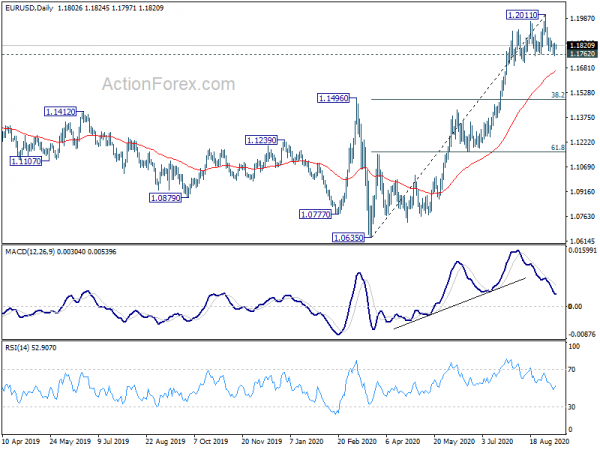
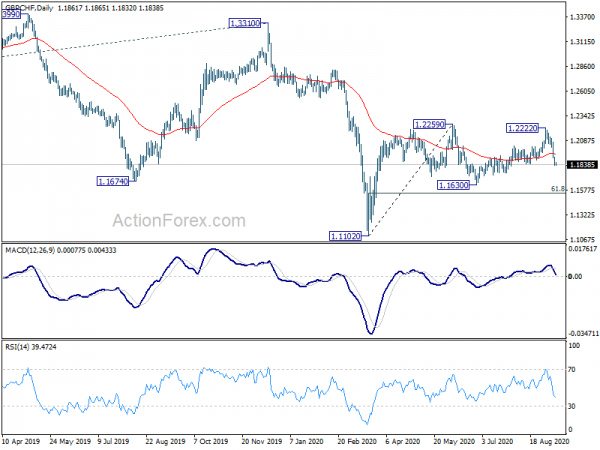
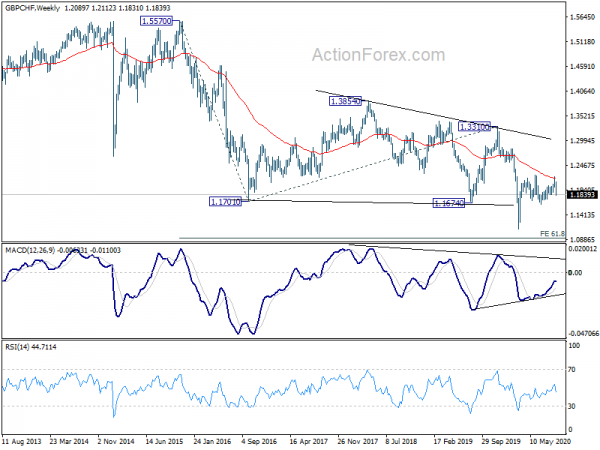
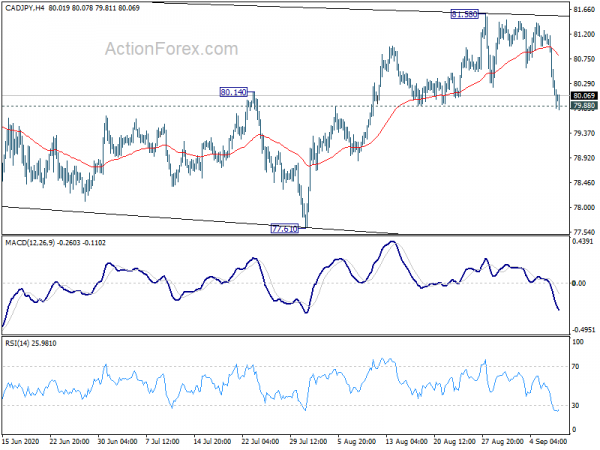
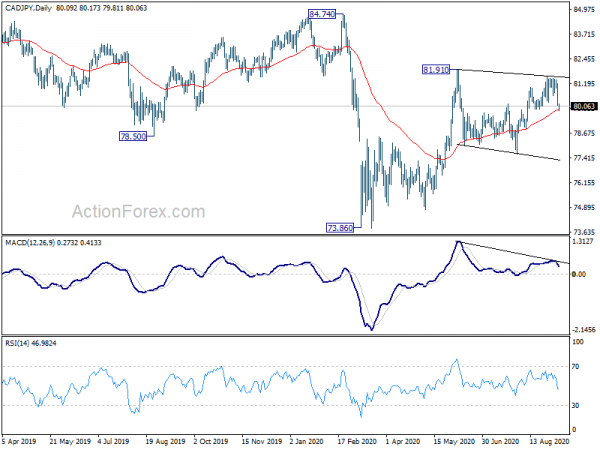
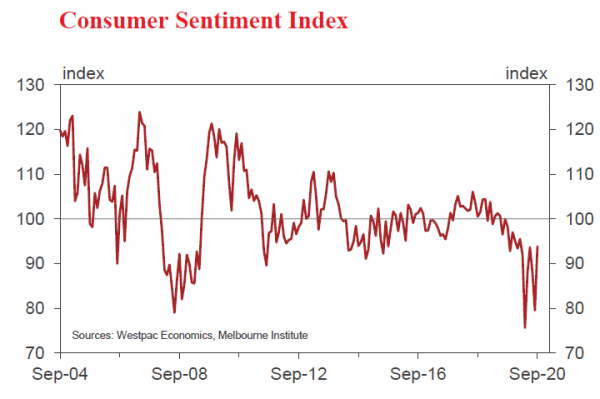

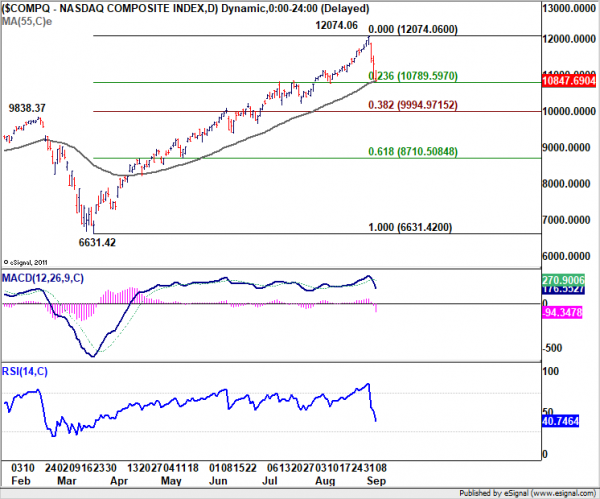
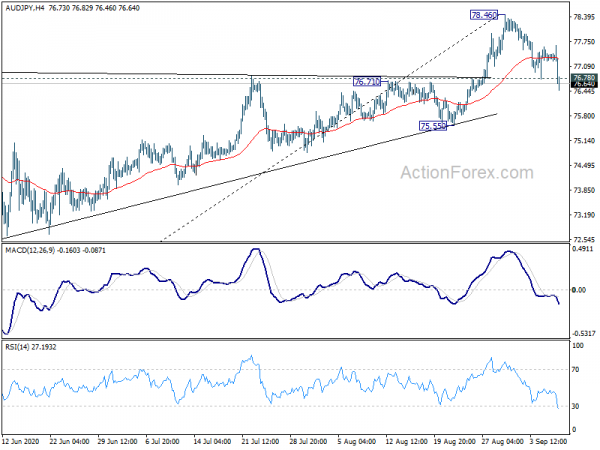
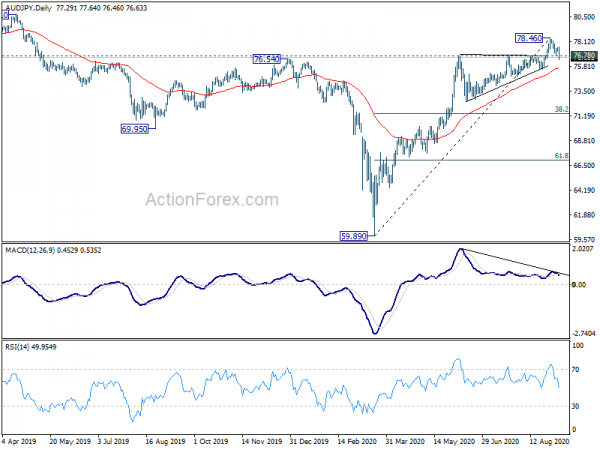
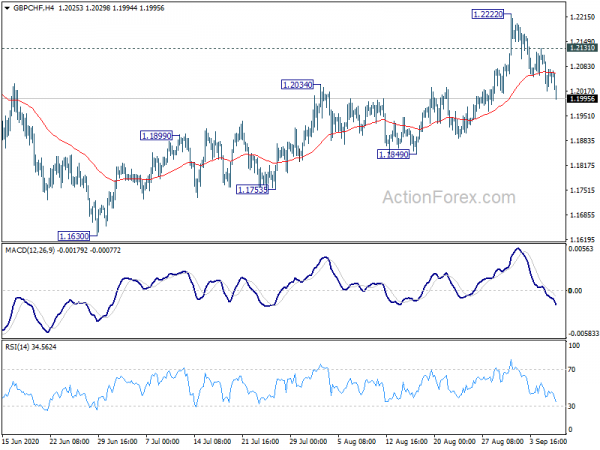
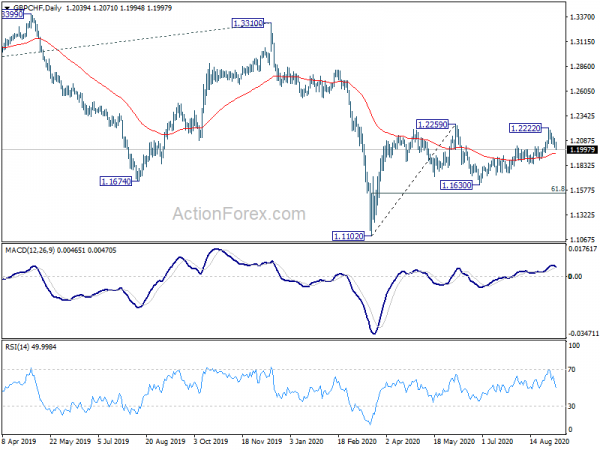
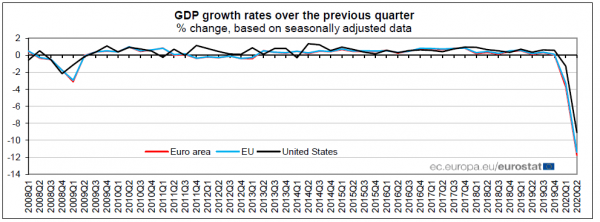
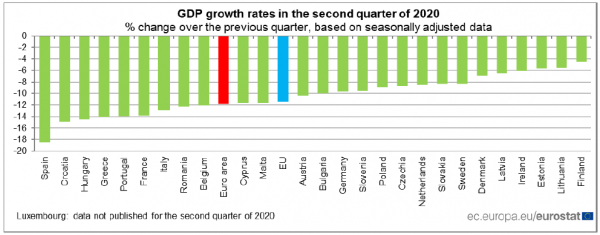
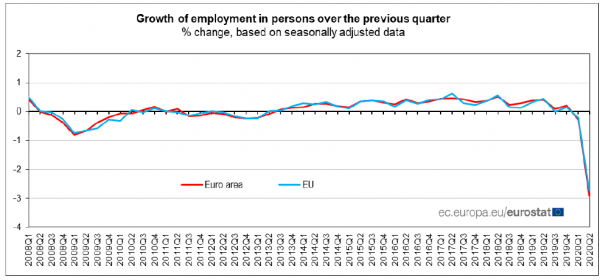
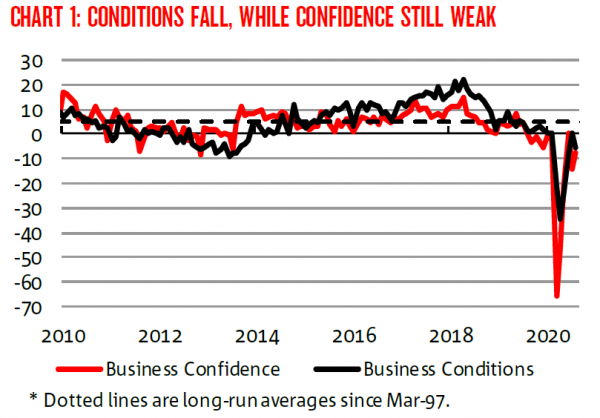

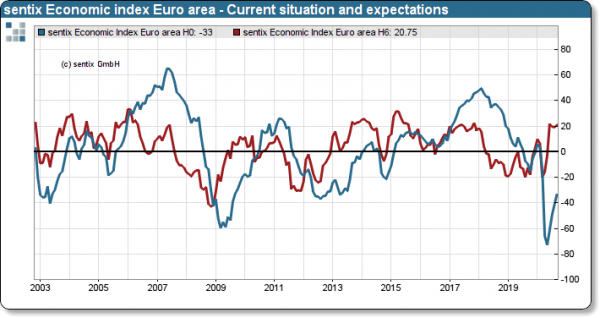

US PPI at 0.3% mom, -0.2% yoy in Aug, PPI core at 0.4% mom, 0.6% yoy
US PPI rose 0.3% mom in August, above expectation of 0.2% mom. PPI core rose 0.4% mom, above expectation of 0.2% mom. Annually, PPI picked up to -0.2% yoy, up from -0.4% yoy, above expectation of -0.7% yoy. PPI core rose to 0.6% yoy, up from 0.3% yoy, beat expectation of 0.3% yoy.
Full release here.